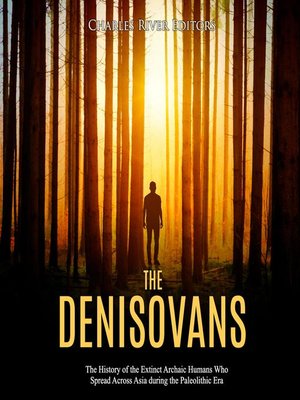The Denisovans
audiobook (Unabridged) ∣ The History of the Extinct Archaic Humans Who Spread Across Asia during the Paleolithic Era
By Charles River Editors

Sign up to save your library
With an OverDrive account, you can save your favorite libraries for at-a-glance information about availability. Find out more about OverDrive accounts.
Find this title in Libby, the library reading app by OverDrive.



Search for a digital library with this title
Title found at these libraries:
| Library Name | Distance |
|---|---|
| Loading... |
The study of paleoanthropology is the branch of anthropology that examines the development of humans and pre-humans, often called collectively hominins, through history. Although paleoanthropology is directly concerned with human history, it diverges from traditional historical studies in that historians use historical records as their primary sources to reconstruct history, while paleoanthropologists work with bones and other artifacts hominins left as their records. Historians deal with the last 5,000 years of human history, while paleoanthropologists go back more than four million years to when the first proto-humans walked the Earth. Although the subject of paleoanthropology covers a much longer chronology than historical studies, the study itself is actually fairly new. As soon as man discovered writing, he began engaging in historiography (historical writing and philosophy), but paleoanthropology only really began in the late 1800s. As archaeologists began finding bones in European caves of a human race that was very different than any race in the modern world, the study of paleoanthropology was born.
However, the results of the DNA testing dramatically changed the course of paleoanthropology once more when it was revealed that although the hominins from what is known as the Denisova Cave were closely related to Neanderthals, much more so than modern humans are related to Neanderthals, they represented a distinct species of humans. Scholars began examining this new hominin race – which became known as "Denisovans," "Denisovan Man," or Homo denisovan – for connections to the Neanderthals and modern humans. Although it has been less than 10 years since the Denisovans were truly discovered, much has been learned about them, particularly about their interactions with the Neanderthals and modern humans, their range, and their culture.







